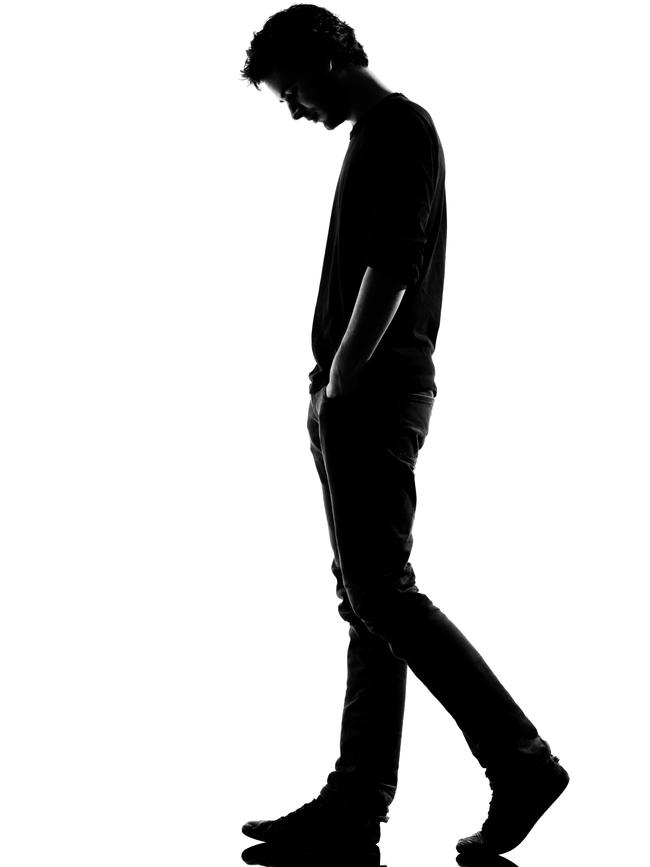How posture can improve your mood
Although improving a slouch may not cure a sore back, studies show it will affect your health.

If you are slouching over your computer, phone or newspaper while reading this, then shoulders back and listen up.
Physiotherapists now believe that there is no such thing as perfect posture when it comes to averting back and shoulder pain, but emerging evidence suggests that the way we sit and stand can have a meaningful effect on our mood and self-confidence.
And scientists investigating the psychology of posture say that it is tiny changes in the way we carry ourselves as opposed to the elaborate gestures of so-called “power posing” — formidable stance, arms out or hands on hips — that are the most effective in making us feel more alert and less fearful.
A decade ago power posing was a hot topic. A study conducted at Harvard Business School by social psychologist Amy Cuddy suggested our body language governed our minds, and that people who adopted a high-power stance felt more powerful than their cross-legged, inward-leaning “low power pose” counterparts.
Cuddy also proposed that expansive and commanding postures went as far as altering body chemistry, causing an increase in confidence-boosting testosterone and a downturn in cortisol, the stress hormone.
Her TED talk on power posing became the second most popular to date and has since amassed more than 58 million views.
Everyone seemed to be into it — from politicians to athletes, executives to interviewees — apart from some of Cuddy’s fellow psychologists, who picked holes in her study and labelled it pseudo-scientific.
Since then the idea that power posing affects our hormones has largely been rebuffed, but many psychologists are now convinced that our posture does indeed influence the way we feel and behave in some ways. For a study to be published in the September issue of the journal Behaviour Research and Therapy, Poppy Brown, a doctoral researcher in psychiatry at the University of Oxford, revisited the concept of power posing to see if it helped to reduce feelings of vulnerability in a group of 100 people who had experienced paranoia.
“There is a scale of paranoia and it builds on negative beliefs and feelings of inferiority,” she says. “We wanted to find out if powerful postures helped these people feel less powerless about themselves.”
To do this Brown asked the participants to hold either a power pose or a neutral pose for two minutes before entering a virtual reality social situation in which they would usually feel self-conscious. Results showed no difference in the outcome, suggesting that posture had little effect on overcoming paranoia. But when Brown repeated the experiment on 50 people who did not experience paranoid thoughts, the power poses did make a difference.
“We found statistically significant, if small, increases in feelings of power among people who did the power poses compared with those who didn’t,” she says. “What we think might be important for raising confidence is not holding wide, expansive power poses, but rather to avoid the small, contractive postures, such as crossing your hands or rounding your shoulders, which seem to reduce self-belief and self-assurance.”
It is not the first time researchers have suggested that slouching affects the way we feel. Elizabeth Broadbent, a professor of health psychology at the University of Auckland, has looked extensively at the way posture affects our psyche.
“What the literature is generally showing is that having a contracted posture — that is rounded shoulders and head down — has negative effects on mood,” Broadbent says. “So changing that posture to be more upright can alter how you feel, make you feel more alert or less fearful.”
It is not just how we sit or stand, but how we hold ourselves when we move around that influences our outlook.
“When people walk with their head tilted down, looking down, and keeping the arms static, it can negatively affect how you feel,” Broadbent says. “In contrast, walking with the head level, looking straight ahead, and swinging your arms has been shown to have a more positive outcome for mood.”

People with depression often droop their shoulders, so for one of her studies Broadbent recruited 61 participants with mild to moderate depression and asked half to sit with levelled shoulders, a straightened back and an upright head during a screen test — she stuck a stiff piece of physiotherapy tape on their backs that pulled tight if they slumped. The rest were left to adopt their habitual slouch.
Results showed that even when they were presented with stress-inducing tasks such as giving a five-minute speech or counting backwards from 1022 in blocks of 13, the upright sitters reported overwhelmingly higher levels of energy and positivity.
“Those asked to sit upright reduced their fatigue and increased their enthusiasm over a short time period,” Broadbent says.
Even their speech patterns changed. “In a stressful speech test they reduced how much they used first-person singular pronouns such as ‘me’ and ‘I’,” she says. “This suggests they had more energy, less negative mood and were less self-focused.”
Why this happens is partly down to the way posture affects our physiological state. “Our posture influences our blood pressure and heart rate and how we feel about stress,” Broadbent says. “Upright participants had a healthier pulse pressure overall during and after a stressor test than those who were slumping.”
But it also affects how others perceive us, and once we are more upright, our body language exudes more positive vibes.
“There is evidence that posture can affect how others perceive us,” she says. “People in more upright postures are seen as more dominant, and it’s possible that this can have feedback effects on our own perceptions as well as give a good impression to others.”
We don’t have to strut, swagger or gesticulate with swinging arms — the tiniest physical tweaks can produce psychological changes.
Brown says that until starting her study it had never crossed her mind that posture could be so powerful.
“We hold a lot of tension in our shoulders when we slouch, and that might promote negativity,” she says. “I do pay more attention to correcting little movements and postures that might have this effect.”
Broadbent embarked on her research after walking on a day when she felt a bit blue and realising that her slumped posture was adding to her mental load.
“I now know that taking a walk while keeping my head looking forward helps me when I am feeling a bit down,” she says.
“It gives me a greater perspective on things I am worried about rather than being too introspective.”
PERFECT YOUR POSTURE
1. Sit down to enjoy food (and stand up to eat less)
There are signs that posture also affects how we eat and digest food. Last year a study in the Journal of Consumer Research looked at how posture changed our enjoyment of a meal. Dipayan Biswas, a professor of marketing at the University of South Florida, reported that standing up, even for a few minutes, when eating muted the tastebuds and that the force of gravity prompted the heart to work harder, ultimately resulting in increased levels of the stress hormone cortisol. Posture altered taste perception, with food tasting better when you are sitting down, Biswas found, so changing to a standing posture to eat could mean you consume fewer calories.
2. Don’t overstress about standing straight
If you start to obsess about ramrod posture, it can backfire. In March researchers at the University of Idaho found that when older adults were instructed to correct their posture, those who described it as “effortful” to engage their core and stand up straight were at an increased risk of falling. Participants had the best balance when told to think about “lightening up” their body.
“It compared older persons’ balance when they stand to attention and stiff like a soldier, compared to standing in more relaxed but non-slouching positions,” says Broadbent. “It seems to make sense that holding muscles rigid might mean we are less able to maintain balance.”
3. Try a digital aid
If you slump into a slouched position as the day goes on, you could try an app that prompts you to correct your posture. Set stand-up reminders on your smartphone or smart watch, or try the Upright Go posture trainer (uprightpose.com), which is designed to correct your stance. It comes as a necklace or silicone adhesive strip that connects to an app via Bluetooth so that the device vibrates when you slouch. An alternative is the Lumo Lift posture coach and activity tracker, which tracks posture via an app and buzzes when you slump.
4. Do daily exercises
Lexie Williamson, author of Move: Free Your Body Through Stretching Movement, says that good posture will become your natural default if you address the habits that make you hunch. To unshackle your shoulders, she suggests grabbing a belt or tie and performing a shoulder flexion exercise whenever you start to slump. Stand with your feet hip-width apart. Hold the strap in front of your body at chest height, hands at least body-width apart or wider. Inhale and raise your arms above your head without lifting the shoulders. Exhale and return to chest height. Repeat five times. Then extend your shoulders by taking the strap behind your back, hands body-width apart, palms downwards. Inhale and raise the strap, keeping your arms straight and avoiding leaning forwards. Exhale back to the start position. Repeat five times.
The Times







To join the conversation, please log in. Don't have an account? Register
Join the conversation, you are commenting as Logout